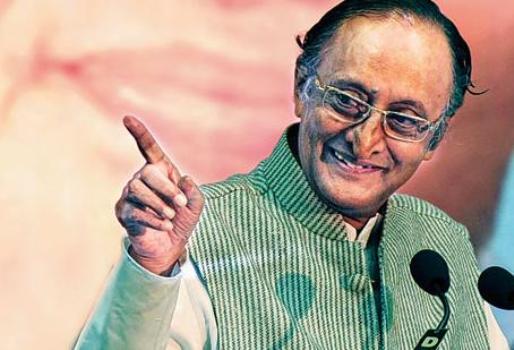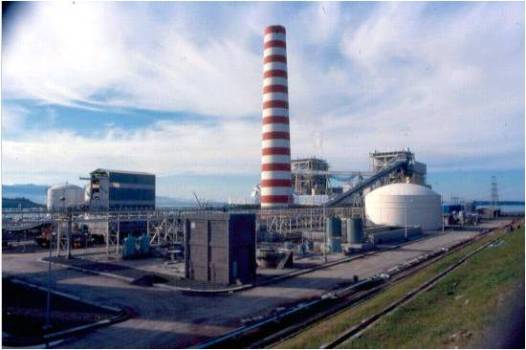Q: Your state has been one of the biggest proponents of goods and services tax (GST). What happened, what went wrong, why did the state backtrack on the GST bill?
Dr Mitra: I don’t think that the state backtracked at all. There was a special session called for a very difficult and important subject—changing the name of the state—and that involved 3-4 hours of discussion. There was also a dengue issue which the opposition wanted to raise and Mamata Banerjee was gracious in having discussed at the democratic level that required several hours. We had a third topic which related to centre-state relations vis-àvis flow of funds.
Now if you have to do a GST in the middle of that one-day session it will require at least 2-3 hours of discussion, according to demands made by both sides of the floor. West Bengal led by Mamata Banerjee has been the biggest supporter of GST. It was we who helped the most not only in the Lok Sabha, but in the Rajya Sabha as well.
In 2009 in our manifesto we had GST. I believe you only need 50% states to ratify and it has been ratified and after the assembly session where we could not accommodate because of the local serious pressures of name change of the state, I have chaired an empowered committee meeting as finance minister of West Bengal where we called all the industry associations, company secretaries, chartered accountants and small and medium enterprises. So this is a work in progress.
Q: By when do you think would this be passed by your assembly?
Dr Mitra: Well, it is a matter of the next assembly meeting, whenever it comes, we will bring it up, but at this time there is practically no need to go through this process as a binding issue, because the President has already given assent. We are the most important supporters of the GST for the people of India.
Q: Which is why it came as a surprise to many and they said that possibly there are some issues that you want to sort out before you pass the bill.
Dr Mitra: Issues are parallel issues, issues which relate to federalism in India …. nothing to do with GST. For example, over Rs6,000 crore has not been received by the state including 100 days work compensation, so it is an ongoing process.
We have taken 26% equity in a deep sea port. We are also building our own state ports, there is a conversation going on.
In centre-state relations, we stand for federalism, this is an ongoing process. It is a different track altogether. As far as we are concerned, the government-to-government relawhat tionship goes on with its processes.
GST is for national interest and therefore Mamata Banerjee stood in support of it. That will continue and I continue to chair the empowered committee of finance ministers on behalf of my state. What is happening as far as the empowered panel meetings are concerned in terms of the discussion or rather the differences as far as a rate is concerned? Some states say it should be raised up to as much as to 24%, some say it should be around
Q: 18%. How are those discussions going; where do you think it will settle?
Dr Mitra: I think the key point is there are multiple rates given by researchers, so the chief economic advisor to the government of India suggested 15-15.5% in the average rate, then you had at one time National Institute of Public Finance and Policy suggesting 27% and there is the Vijay Kelkar committee report, which came as the first report on GST, suggesting 12%. This is a matter of revenue neutrality so that state revenue is preserved. Different states may have different views but has happened is the empowered committee has fully given support unanimously to the fact that we have two principles.
Principle one: GST rate should not be such that common people get inflationary pressure. What’s the point of GST, which at the end of the day is for the people?
Principle two: it should not be so low that states do not get revenue, centre has to compensate for 5 years and they don’t have the money to compensate. Despite constitutional process they may get into a problem, so it should be an optimal rate, not a maximal rate.
Q: Where is that optimal rate coming up to?
Dr Mitra: This is exactly what the GST council will debate in the coming weeks. I am sure it will be a full debate.
Q: Do you think between 20-22% is where it should land in terms of a cap?
Dr Mitra: It would be very difficult for me to hazard a number as a guess. It would be pre-empting the views of other state finance ministers.
Q: If I talk to you as the finance minister of Bengal, what would your view be?
Dr Mitra: I would not present the view here. I would present it at the GST council. The reason is, we have to discuss it, we have to listen to each other, only then after listening to arguments of each other along with the Union finance minister who is the chair of the GST council, will we arrive at a decision. It is too pre-emptive today for me to just give you a rate. It would be unfair and wrong.
I am not asking you to give me a rate and say that this is the rate that we will finalize because obviously it is a discussion, there are so many states and Union territories that would be discussing it. But from the perspective of a finance minister of a state, if you look at your revenue, if you look at the taxation system and stuff, where do you think the cap could come up to?
I don’t think I can hazard a number for you because as chairman of the empowered committee I cannot say, I just cannot give you a number. Let it come up in the GST council which is happening very soon, let it be discussed.
It is a national issue, this is a very serious issue. I have given you the principle which the empowered committee has defined unanimously—not so high that the industry passes that on to the consumer and there is inflationary pressure. In fact, during the discussion of the empowered committee with the chambers of commerce, one of the questions raised by finance ministers was, when taxes are raised industry tends to pass on those taxes to the consumers and why should they bear it?
Q: When taxes get lowered, will the industry pass this on to the consumers?
Dr Mitra: So, I would say that we have defined the principles at the empowered committee of all finance ministers across political parties and across states.
Q: For the panel there are two months to discuss and come up with a consensus as far as all the issues are concerned. Do you think that is a fair enough time?
Dr Mitra: It depends on the intensity with which this is conducted. If you are going to do it on a war footing every day, every week where everybody becomes available, attempt will be to see how this can come up within a certain space of time. Also it will depend on the number of industrial issues that come up. For example, today an industry has 5% value added tax (VAT) and now it is going to face X percent revenue neutral rate (RNR), that industry may be employing 20 million people, that industry will come up and say to you please don’t change my 5% to a much higher number.
So, that has to be discussed in the GST council. There may be categorization of areas, where there are sin goods, there are luxury goods, there are non-luxury goods, all this has to be defined to the satisfaction of the entire GST council.
So, all this will come on the table and already the empowered committee has received many representations. It will go into 6,000-7,000 pages of representations from the industry because we invited that as there should be dialogue. All this has to be collated, structured, made into some kind of a framework and then on principles this will be discussed at the GST council.
Edited Excerpts from an interview published in Livemint






